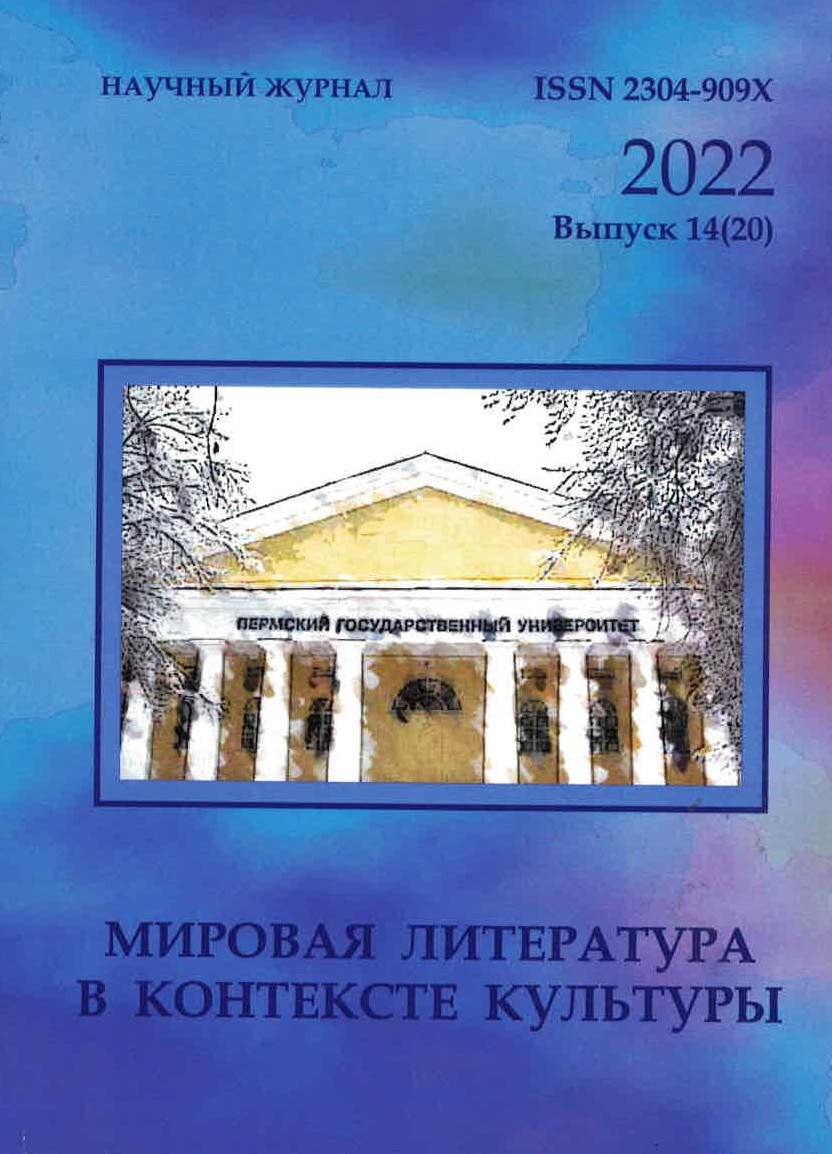Between Sentimentalism and Appocalipsis: Landscape in the Novels by Michel Houellebecq
DOI:
https://doi.org/10.17072/2304-909Х-2022-14-71-80Abstract
The article analyzes landscape images and motifs of four of the most "visual" novels by the modern French writer Michel Houellebecq. It is clarified that the works under study realize the traditional type of hero for the author (an alienated person) and the plot organization, a "sentimental journey" to the countryside. Rural landscapes are idyllic, made in a classic sentimental-romantic manner, contain traditional attributes of nature, urban are aggressive, monochrome, recreated with the participation of minimalism techniques. In the process of analyzing landscapes in novels, a complex of allusions to modern visual practices and painting of the XIX century is revealed. It is concluded that the inability of Houellebecq’s character to unite with nature expresses the extreme degree of alienation of modern man.Downloads
Published
2022-07-18 — Updated on 2023-12-29
Versions
- 2023-12-29 (2)
- 2022-07-18 (1)
How to Cite
Suslova И. В. (2023). Between Sentimentalism and Appocalipsis: Landscape in the Novels by Michel Houellebecq. World Literature in the Context of Culture, 14(20), 71–80. https://doi.org/10.17072/2304-909Х-2022-14-71-80 (Original work published July 18, 2022)
Issue
Section
Статьи

